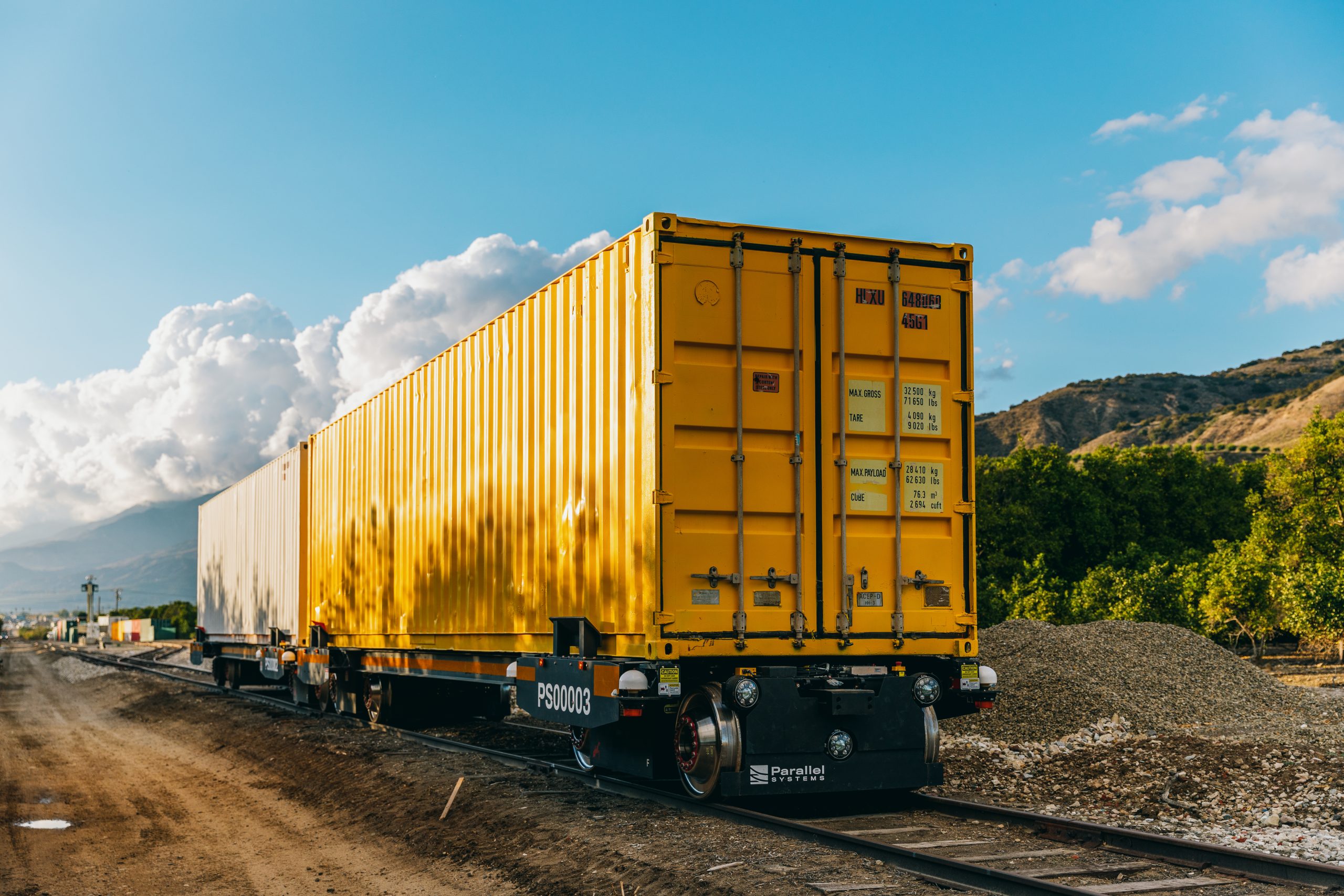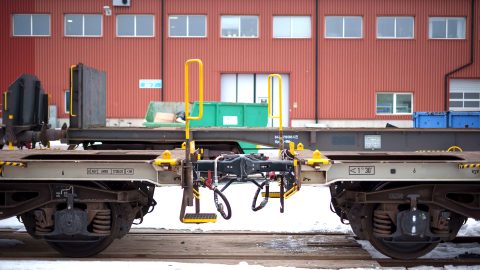Parallel Systems deploys automated platooning railcars

Parallel Systems publicly showcased for the first time its platooning operation with autonomous battery-electric rail vehicles on 20 December. Separate Parallel railcars connect with each other through bumper-to-bumper contact and are able to form platoons of up to 50 cars, transporting goods on conventional railway tracks, in a completely different way.
The company released video footage of the Parallel vehicles successfully platooning on its Southern California test track. Individually powered Parallel railcars can form platoons of up to 50 cars, improving aerodynamic energy efficiency and using railroad network capacity more effectively, according to the company.
Parallel System was founded in 2020 by a group of former SpaceX engineers. Headquartered in Los Angeles, California, the company aims to increase the utilisation of today’s rail network by converting some of the 940 billion U.S. dollar trucking business to rail. Parallel’s platooning debut comes on the heels of the company’s announcement with Australian rail freight network manager Arc Infrastructure, which demonstrated a vehicle for future container transportation in Perth, Australia.
Fully automated
The Parallel Systems technology eliminates the requirement for railcars to couple to each other and connect air brake lines. Each railcar has its own self-contained brake system instead. Upon contact, each vehicle maintains bumper contact with the one in front by controlling so-called tractive effort. The small air gap between containers and the pushing action through railcar bumpers reduces the average aerodynamic drag of the platoon, ultimately improving energy efficiency.
The platooning process is fully automated. Individual railcars can also separate from one another, enabling them to bypass rail classification yards and independently proceed to varied destinations, or keep railroad crossings clear. “Our platoon testing began in October 2023, and the performance has been consistent with our modelling and simulations, which is exciting right out of the gate,” said Matt Soule, Co-founder and CEO of Parallel Systems.
“The vehicles have remained connected according to plan, allowing us to plan expanded platoon testing with increased speeds, greater number of vehicles, and braking. Introducing platooning will help the rail industry address a range of critical challenges, including sorting and routing freight more quickly and keeping railroad crossings open for roadway and pedestrian traffic”, states Soule.
With Parallel’s platooning technology, there is no need to use rail classification yards, because the railcars can attach and detach independently from platoons, allowing railroads to sort freight anywhere along the network where there is a switch. These yards are traditionally used to separate and sort railway cars for assembly into freight trains that can be sent to their destinations.

Keeping crossings free: a recurring issue in the U.S.
“The autonomous battery-electric freight rail vehicles form platoons through bumper-to-bumper contact that don’t need to couple and allow freight to sort on the rail network, keeping railroad crossings open”, says Parallel Systems. Compared to Europe, freight trains in the US are much longer. In 2021, the median length of a train (meaning the trains half were longer, and half were shorter) on Class I railroads was 1.6 kilometres (5,400 feet) according to the Association of American Railroads.
The United States has set its freight train limit at 3,658 metres, according to the International Union of Road-Rail Combined Transport (UIRR). European standards for the length of a freight train are 740 metres and sometimes 835 metres, says the UIRR. In many EU countries, the practical length of freight trains is shorter, however, due to infrastructure limits such as the length of sidings. Long trains keep crossings closed for a long time. Especially if there is a breakdown: there are stories of children crossing the tracks under a freight train standing still at a crossing to get to school, and emergency services being prevented from reaching those who need it.
The United States Department of Energy (DOE) recognised Parallel as a high-potential, high-impact energy-saving technology when it awarded the company approximately 4.5 million dollars as part of its Advanced Research Projects Agency-Energy (ARPA-E) initiative. The purpose of the award is to test how well Parallel’s zero-emissions rail vehicles integrate with real-world railroad operations and to evaluate supply chain resilience and reduction in energy usage, and associated emissions.
This article was originally published on our sister publication RailTech.com
Also read:





This is a good example of improving railway infrastructure. At the same time, choosing the right logistics solutions doubles the effectiveness of such innovations. I would like to mention the shipping platform Shipstage, which allows you to make accurate calculations of shipping costs after registration and provides a wide range of features that improve logistics processes. By the way, they also provide palletised delivery services https://shipstage.com/faq/categories/8-palettenversand/